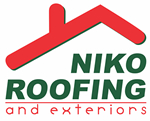A roof system is a big investment for homeowners, and may represent a significant portion of construction costs.
It’s a roofer’s job to help the homeowner protect his or her investment by conducting thorough, careful maintenance on the roof on a regular basis. This can help ensure it’s being properly protected.
What causes damage to a roof?
The average roof takes a lot of abuse over its lifetime – often more than other areas of the house. Some common examples include:
- Exposure to the elements (sunlight, wind, rain, hail, snow)
- Biological growth (blue-algae, tree or plant debris)
- Poor installation technique
- Inconsistent maintenance or repairs
- Change in building use (leading to increased humidity or imbalanced ventilation)
Why maintain a roof?
Even if there are no outward signs of obvious damage, every homeowner should ensure a professional regularly inspects and performs maintenance, where necessary, to a roof. Keeping it in healthy condition may protect the home. Maintenance is an investment that may pay major returns down the road.
Scheduling professional roof maintenance every 5 years strengthens the roof’s life and ensures safety and performance. We can help you with efficient roof maintenance services. By maintaining your roof timely, you prevent damage, improve curb appeal and balance roof costings.
Why us?
- Our roofer will do a complete roof assessment to pinpoint the reason for the roof leak/problem.
- Our roof inspections are done by qualified inspectors (residential and commercial) with years of experience in the industry.
- A detailed estimate explains the scope of work and all applicable charges, so you have no surprises after the job is done.
- As an authorised roofing contractor for leading roofing products, you are always assured of quality materials and of the workmanship by Niko Roofing
Essential Roof Maintenance Checklist
How do you maintain a roof? Well, the first step is simply to check up on it as often as possible, especially after a heavy storm or high winds. The good news is that you don’t have to clamber up a ladder to get a good look at your roof. Instead, all you need is a good pair of binoculars to see any potential problems.
Here’s what you should look for when inspecting your roof yourself:
• Missing shingles
• Curling shingles
• Cracked shingles
• Peeling flashing
• Missing granules
Any of the above signs of damage should be looked at as soon as possible, preferably by a professional roofing contractor who can safely make the necessary repairs.
Wondering why you should pay for a roofing inspection when you have our roof maintenance checklist right in front of you? An inspector will be able to spot potential problems you might’ve missed, as well as provide you with invaluable tips for maintaining your roof. They’ll also give you a rough idea of how many more years it will last. Most roofers recommend inspections every two years, but an inspection once a year will increase your chances of finding potential issues before they become costly repairs.
Another good tip that your roof needs maintenance is finding water stains inside your house. You should be checking your ceilings and attic just as regularly as your roof itself for water damage to head off any serious issues. The most common warning signs of a leak are:
- Musty odors in certain rooms.
- Water stains on your ceiling.
- Spots on your exterior walls.
- Bulging patches on your interior walls.
If you notice any of these signs, your next step is to locate the leak and call in a professional to patch up the hole in your roof.
No roof maintenance checklist would be complete without this tip. Though it’s a dirty job, cleaning out your gutters is an essential part of maintaining your roof. Clogged gutters make it easy for water to seep under the structure of your roof, creating more than just a few water stains. Most experts recommend cleaning them out twice a year, once in late spring and again in early fall, as part of a regular fall home maintenance checklist.
Tree branches can be a problem for a few reasons, the most obvious being the risk of them falling on your roof during severe weather. Be vigilant when it comes to your landscaping and cut off any large branches that are directly over your roof. This will help reduce storm damage, while also preventing leaves from piling on top of your shingles, absorbing moisture and eventually rotting your roof.
While running through your roof maintenance checklist, make sure you check out your chimney for cracks or missing mortar. Structural damage of any size can cause bricks to start falling out, which can damage your roof, let alone cause your chimney to collapse. You can either hire a contractor to patch up any mortar cracks, or break out a trowel and do it yourself.
A sloping or leaning chimney can be caused by issues with your home’s foundation as well. If you notice your chimney has moved, call a contractor to have it fixed right away and check the rest of your home for signs of foundation problems.
